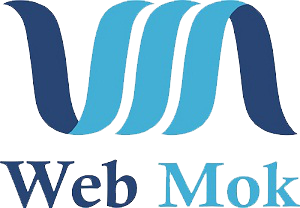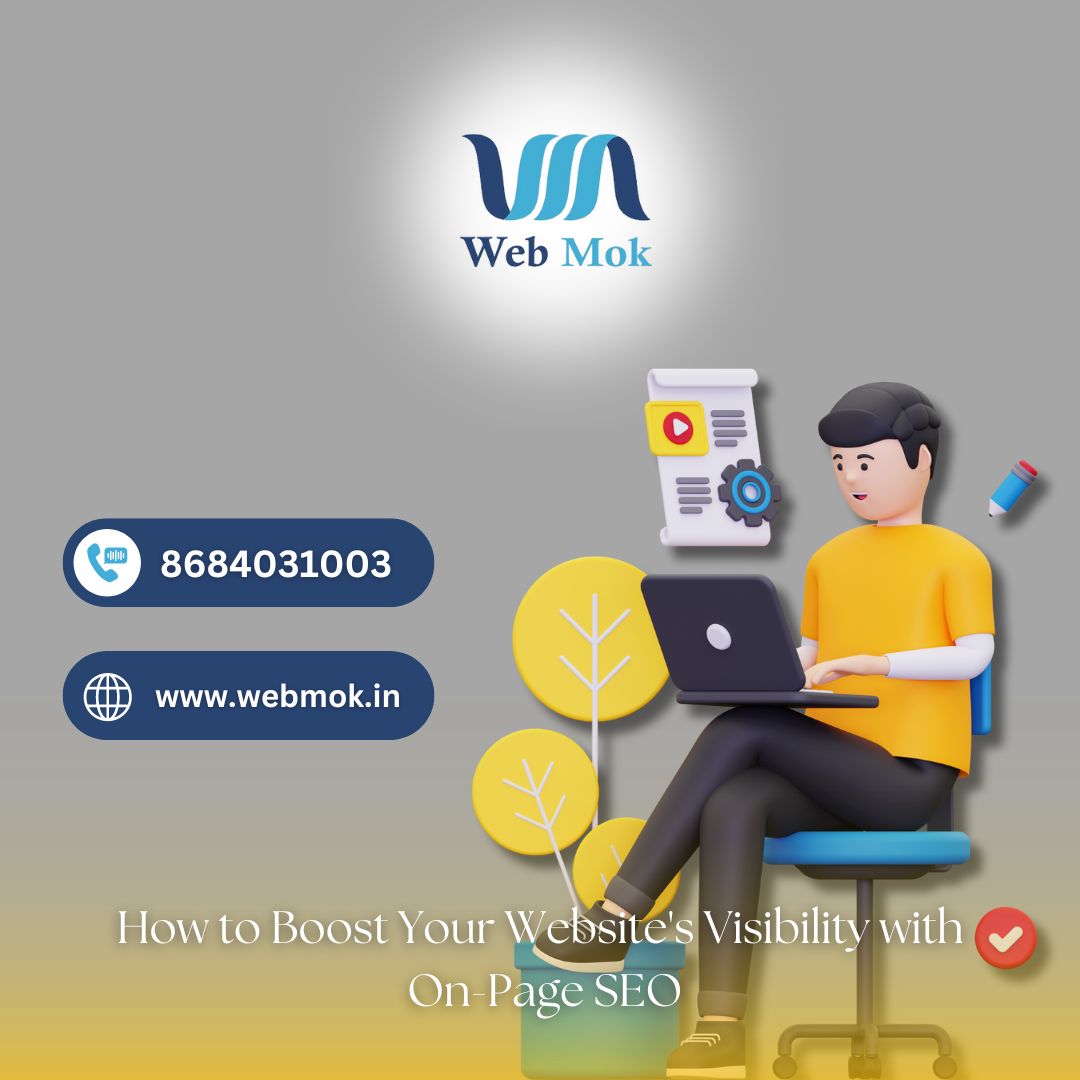How to Boost Your Website's Visibility with On-Page SEO
On-page SEO, a crucial aspect of search engine optimization, focuses on optimizing individual web pages to rank higher on search engine results pages (SERPs) and earn more relevant traffic. This blog will guide you on how to enhance your website’s visibility through effective on-page SEO strategies. Whether you're a business owner looking for SEO services company in Rohtak or a marketer aiming to improve your online presence, these tips will help you achieve your goals.
1. Optimize Title Tags for Relevance and Click-Through Rates
Title tags are one of the most important on-page SEO elements. They are the first thing users see when your page appears on search engine results, making it crucial to craft compelling and keyword-optimized title tags.
To maximize visibility and engagement:
- Include your primary keyword, such as “SEO services in Rohtak,” naturally within the title tag.
- Keep your title tag between 50-60 characters to ensure it displays fully on SERPs.
- Make your title engaging to encourage clicks. For example, a title like "Effective SEO Strategies: How to Rank Higher on Google" is more enticing than a generic title like "SEO Tips."
A well-optimized title tag can significantly improve your website's click-through rate (CTR), signalling to search engines that your content is relevant to user searches.
2. Craft Compelling Meta Descriptions
Meta descriptions are short snippets that appear under the title tag in search engine results. While not a direct ranking factor, they play a crucial role SEO service agency in Rohtak in improving your website's CTR, indirectly impacting SEO.
Here’s how to create an effective meta description:
- Keep it concise, around 150-160 characters.
- Include your primary keyword naturally, such as "SEO services in Rohtak."
- Provide a clear and compelling reason for users to visit your page, such as highlighting benefits or offering solutions to their queries.
- Use action-oriented language like "Learn more," "Discover," or "Get started" to prompt users to click.
A well-crafted meta description can boost your website’s visibility by attracting more users to click on your links.
3. Use Header Tags to Structure Your Content
Proper use of header tags (H1, H2, H3, etc.) helps both users and search engines understand the structure and hierarchy of your content. Search engines, like Google, prioritize well-structured content as it improves user experience.
- Use H1 tags for your main headline, ensuring it includes your primary keyword, like "Boost Your Website’s Visibility with On-Page SEO."
- Break your content into sections using H2 tags for subheadings and H3 tags for further subsections.
- Use relevant keywords in your header tags to emphasize important sections of your content. For example, if discussing SEO services, a subheading could be "The Importance of Professional SEO agency in Rohtak."
This structure makes your content easier to read and navigate, enhancing user experience while boosting SEO performance.
4. Optimize Your URL Structure
A clear and concise URL structure is essential for both user experience and SEO. Search engines use URLs to understand the content of your page, and an optimized URL can help your page rank higher.
- Keep URLs short and descriptive, ideally under 60 characters.
- Include your primary keyword in the URL to make it relevant to the search query. For instance, instead of using a generic URL like www.example.com/page1, use something like www.example.com/seo-services-rohtak.
- Use hyphens to separate words for better readability and SEO optimization.
Optimizing your URL structure ensures that both users and search engines can easily understand what your page is about.
5. Incorporate Keywords Naturally
Keyword optimization is at the heart of on-page SEO. However, it’s essential to use keywords naturally within your content to avoid keyword stuffing, SEO service in Rohtak which can lead to penalties from search engines.
- Start by conducting thorough keyword research to identify relevant keywords that users are searching for, such as "SEO services in Rohtak."
- Incorporate your primary keyword into key on-page elements like the title tag, meta description, URL, and headers.
- Use related keywords and variations throughout your content to cover different search intents and avoid repetition.
By using keywords strategically and naturally, you can improve your website’s relevance to search queries and enhance its visibility.
6. Optimize Images with Alt Text and File Names
Images are an important part of web design, but they can also boost your on-page SEO if optimized correctly. Search engines can’t "see" images, so they rely on alt text to understand the content.
- Use descriptive file names for images, such as “seo-services-rohtak.jpg” instead of “image1.jpg.”
- Add alt text to each image that describes what the image is about and includes relevant keywords where applicable, such as “Digital marketing team offering SEO services in Rohtak.”
- Compress images to improve page load times, which is a ranking factor for SEO.
Optimizing your images enhances the user experience and can improve your chances of ranking in Google Image search results.
7. Enhance Website Speed and Mobile-Friendliness
Page speed is a significant ranking factor for Google, and a slow-loading website can harm both your rankings and user experience. Additionally, SEO fee and duration with more users accessing the web on mobile devices, having a mobile-friendly site is essential.
- Use tools like Google PageSpeed Insights to assess your website’s performance and identify areas for improvement.
- Optimize your images, use browser caching, and reduce the number of plugins to enhance page speed.
- Implement responsive design so that your website adapts to various screen sizes, ensuring an optimal user experience on mobile devices.
A fast, mobile-friendly website not only ranks higher on SERPs but also keeps visitors engaged, reducing bounce rates.
8. Create High-Quality, Engaging Content
Content is king in SEO. High-quality, relevant content attracts visitors, keeps them engaged, and encourages them to take action. It also signals to search engines that your website is an authoritative source of information.
- Write content that addresses the needs and pain points of your audience. For instance, if you’re offering SEO service provider in Rohtak, create blog posts that provide value, such as “Top Benefits of SEO for Local Businesses.”
- Keep your content fresh and updated. Search engines prioritize websites that regularly update their content.
- Use internal linking to guide users to related content on your website, which helps reduce bounce rates and improves page authority.
By focusing on creating valuable content, you’ll increase your website’s chances of ranking higher and attracting more visitors.
9. Optimize for Voice Search
With the rise of voice-activated devices like Siri and Google Assistant, optimizing for voice search is becoming increasingly important. Voice search queries are often more conversational and SEO courses institute in Rohtak longer than text queries.
- Focus on long-tail keywords and natural language phrases in your content, such as “best SEO services in Rohtak” instead of just “SEO Rohtak.”
- Use structured data to help search engines understand your content and increase your chances of being featured in voice search results.
Optimizing for voice search can give your website an edge in the growing world of voice-activated queries.
10. Monitor and Adjust Your SEO Strategy
On-page SEO is not a one-time task but an ongoing process. Regularly monitoring your SEO performance and adjusting your strategy based on the data is crucial for long-term success.
- Use tools like Google Analytics and Google Search Console to track your traffic, rankings, and user behavior.
- Identify pages that are underperforming and optimize them with fresh content, updated keywords, and enhanced user experience.
- Keep up with the latest SEO trends and algorithm updates to stay ahead of the competition.
By continuously monitoring and refining your SEO strategy, you can maintain and improve your website’s visibility over time.
Conclusion
On-page SEO is the foundation of a successful digital marketing strategy. By optimizing your website's elements, such as title tags, meta descriptions, headers, and content, you can improve your search engine rankings and attract more relevant traffic. If you’re looking for professional help, consider investing in SEO courses in Rohtak to ensure your website stays competitive and visible in today’s dynamic digital landscape.



Lorem Ipsum has been the industry’s standard dummy text ever since the 1500s, when an unknown printer took a galley of type and scrambled it to make a type specimen.
Lorem Ipsum has been the industry’s standard dummy text ever since the 1500s, when an unknown printer took a galley of type and scrambled it to make a type specimen.
Lorem Ipsum has been the industry’s standard dummy text ever since the 1500s, when an unknown printer took a galley of type and scrambled it to make a type specimen.